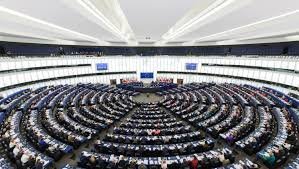Report by Gerry Lawson
A short document summarising what we know and don’t know about the next CAP has been produced by EURAF. It is available online and open for comments.
It has the following headlines:
-
Promote agroforestry - Agroforestry must be specifically promoted to support the Sustainable Development Goals, the Paris Climate Goal, and key national and international targets.
-
Support agroforestry - Agroforestry must be supported through Pillar I of the Common Agricultural Policy - everywhere: on arable land, on permanent grasslands, and in permanent crops.
-
Celebrate agroforestry - The new CAP must group together, and integrate as “agroforestry”, the many measures that support small-scale use of trees in Pillar II on agricultural and forest land.
-
Recognise agroforestry - Member states and the EU must report the extent of agroforestry through their annual “report indicators” and quinquennial “impact indicators”
-
Monitor agroforestry - Many countries have afforestation targets but neglect agroforestation and regeneration of existing agroforestry (e.g. hedges) - these could greatly increase tree cover, while reducing the financial and fiscal drawbacks of afforestation for farmers.
-
Distribute agroforestry tools and knowledge - The Commission is making a GIS “Farm Sustainability Tool (FAST)” available to all EU farmers. This should be modified to include the impact of farm-trees on nutrients and GHG emissions
-
Use agroforestry for a better climate - Ensure that agroforestry is included by every member state in annual emissions reporting to the UNFCCC
-
Resist creating forestry v agriculture silos - Prevent member states from excluding forestry measures, including agroforestry, from their CAP Strategic Plans and from their annual CAP reporting requirements.
On the 20th May the Commission released a limited circulation “non-paper” on “Direct Payments and the eligibility of agricultural areas which contain ineligible features such as landscape features and trees”. This non paper is welcomed by EURAF since it again emphasises that it is for Member States to set the rules for eligibility, and that they should be particularly flexible regarding agroforestry.
The following conclusion is important:
“An example of what this flexibility will allow is the case of agroforestry. Currently, situations of conflict between this type of agricultural practice and rules on the eligibility of trees, set in the EU legislation were often denounced by Member States and stakeholders. In the future, according to the proposal, Member States would have the leeway to ensure agricultural area under agroforestry is fully eligible when justified based on the local specificities (e.g. density/species/size of the trees and pedo-climatic conditions) and the value added of the presence of trees to ensure sustainable agricultural use of the land. It is also important that this encompasses all possible agricultural land uses, avoiding inclusion of trees only on arable land: as agroforestry systems are present also on permanent grassland and permanent crops.”












